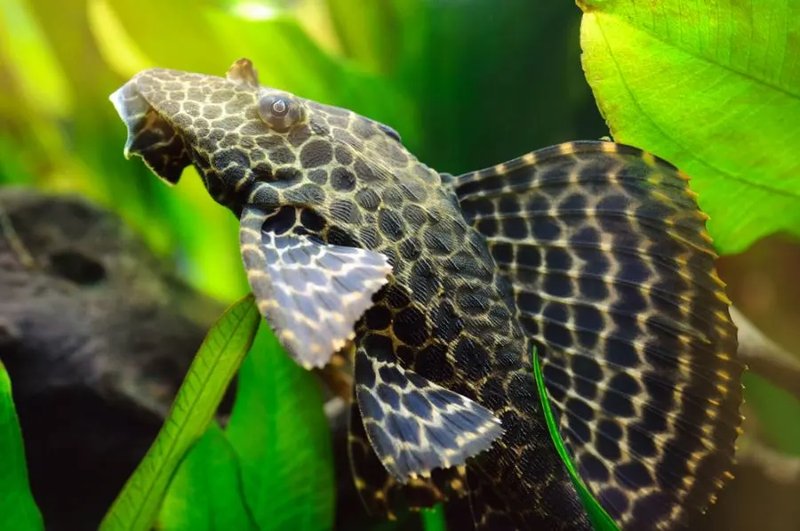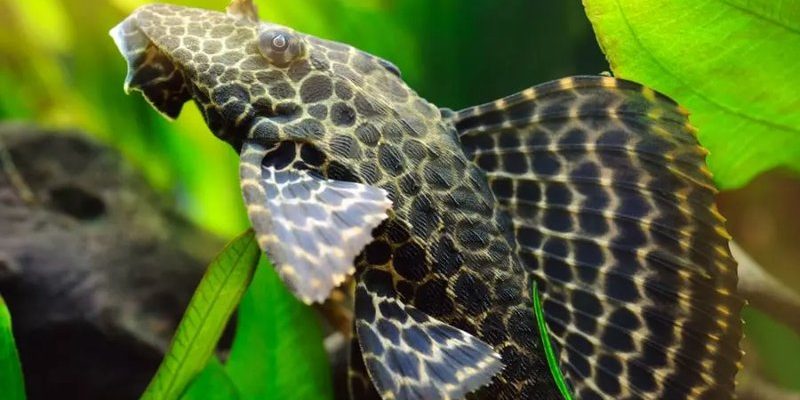
Think of your pleco as a charming roommate who occasionally gets into trouble—they might need your help to get back on track. In this guide, we’ll explore the common health problems that can affect your Plecostomus and how to effectively treat them, ensuring your aquatic friend thrives in its environment.
Understanding Common Health Issues in Plecostomus
While plecos are generally hardy fish, they’re not invincible. Various factors can lead to health problems, from water quality to diet. Here’s the thing: maintaining a stable environment is crucial. If the water parameters aren’t right, your pleco might show signs of distress.
Some common issues include ich (a pesky parasite), fin rot, and gill disease. Most of these problems can be managed with the right knowledge and actions. So, let’s dive into these common ailments and see how you can spot and treat them.
Ich (White Spot Disease)
Ich, short for *Ichthyophthirius multifiliis*, is like the common cold for fish. It’s caused by a parasite and often shows up as small white spots on your pleco’s skin, fins, and even gills. You might notice your fish scratching against objects or swimming erratically—signs that something’s definitely not right.
To treat ich, you can use a combination of heat and medication. Here’s a simple plan:
- Increase the temperature: Gradually raise the tank temperature to around 82°F (28°C). This speeds up the life cycle of the parasite.
- Medicate: Apply an ich treatment medication, which you can find at pet stores. Follow the instructions closely.
- Maintain clean water: Regular water changes and proper filtration are key to preventing ich from coming back.
Consistency is vital. Monitor your pleco closely. If things don’t improve after a week, consult an aquatic vet for further advice.
Fin Rot and Other Skin Disorders
Fin rot is like a bad haircut—one day everything’s fine, then suddenly you notice your pleco’s fins looking frayed or discolored. It can be caused by poor water quality, stress, or even injuries from tank mates.
Here’s how to tackle it:
- Check water quality: Make sure the pH, ammonia, nitrite, and nitrate levels are within the ideal range for plecos.
- Isolate the problem: If your pleco is fighting with other fish, consider separating them to reduce stress.
- Medicate: Apply an antibacterial treatment specific for fin rot. This can help heal the damaged fins.
Keeping a close eye on social dynamics in the tank can prevent additional stress, which is essential for your pleco’s recovery.
Gill Disease: Signs and Treatment
Gill disease can be a serious issue for your pleco. If you notice your fish gasping at the surface or exhibiting lethargy, it might be a sign of gill disease. Often caused by poor water quality or parasites, this condition can lead to suffocation if left untreated.
To help your pleco breathe easier, follow these steps:
- Perform a water change: Change 25-50% of the water to improve overall quality.
- Check for parasites: Observe the gills for any unusual discoloration or lesions. If something seems off, a medication designed for gill parasites can be helpful.
- Increase oxygen levels: Ensure your tank is well-aerated. Adding an air stone can boost oxygen levels significantly.
It’s essential to act quickly here. Gill disease can escalate, so don’t hesitate to seek professional help if needed.
Dietary Issues and Obesity in Plecostomus
Diet plays a massive role in your pleco’s health. If they’re not getting the right nutrients, they can face various health challenges, including obesity. Overfeeding and a lack of variety can lead to bulging bellies and health problems down the line.
To ensure your pleco stays healthy:
- Feed a balanced diet: Use high-quality pellets, algae wafers, and occasional fresh vegetables like zucchini or cucumber.
- Limit feedings: Offer just what they can eat in a few minutes once or twice a day. This helps prevent overindulgence.
- Monitor weight: Keep an eye on your pleco’s body shape. If it starts to look rounder than normal, adjust their feeding schedule.
Remember, a well-fed fish is not the same as a well-nourished fish.
Stress as a Common Health Problem
Stress can be a silent killer in the aquarium. If your pleco is constantly hiding, acting aggressive, or exhibiting odd behaviors, stress might be the culprit. The main causes are often overcrowding, aggressive tank mates, or sudden changes in water conditions.
To create a more peaceful environment:
- Provide hiding spots: Rocks or caves can give your pleco a safe space to retreat when feeling overwhelmed.
- Avoid overcrowding: Make sure your tank isn’t overstocked. Each pleco needs its space.
- Maintain stability: Keep a close eye on temperature, pH, and other parameters to minimize stressors.
By taking these steps, you help ensure your pleco remains a happy, healthy member of your aquarium family.
Preventive Measures for Your Plecostomus
Being proactive about your pleco’s health is the best way to prevent problems before they arise. Regular maintenance can make a significant difference in your fish’s life.
Here’s a simple checklist to keep in mind:
- Regular water changes: Change 10-15% of the water weekly to keep it fresh.
- Monitor tank mates: Choose compatible species that won’t stress your pleco.
- Routine health checks: Look for any signs of illness regularly. Early detection can make treatment much easier.
Keeping your aquarium in tip-top shape can be a game-changer. It helps your pleco live its best life.
When to Seek Professional Help
Sometimes, despite your best efforts, problems can escalate. If your plecostomus shows persistent signs of illness despite treatment, or if its condition worsens, it’s time to seek professional help. An aquatic vet can provide insights and treatments that go beyond over-the-counter medications.
Take it seriously—your pleco’s health is paramount. You wouldn’t ignore a friend in distress, right? The same goes for your beloved aquatic roommate.
In conclusion, staying informed about the common health problems in plecostomus is key to maintaining a thriving aquarium. By understanding the signs and knowing how to treat them, you can ensure your pleco remains a healthy, happy part of your aquatic family. With a little care and attention, your pleco can live its best life, continuing to be the charming algae-eater you love.

